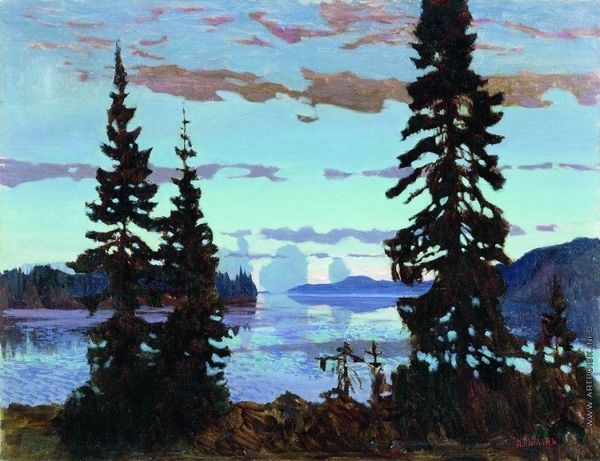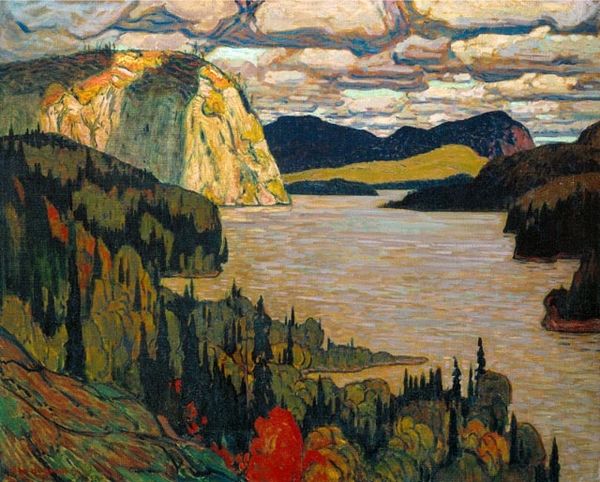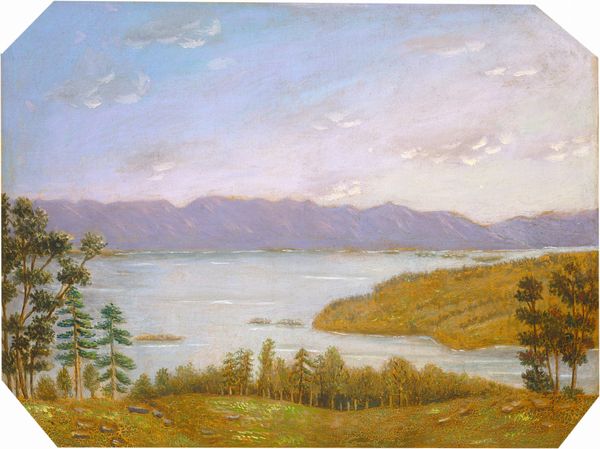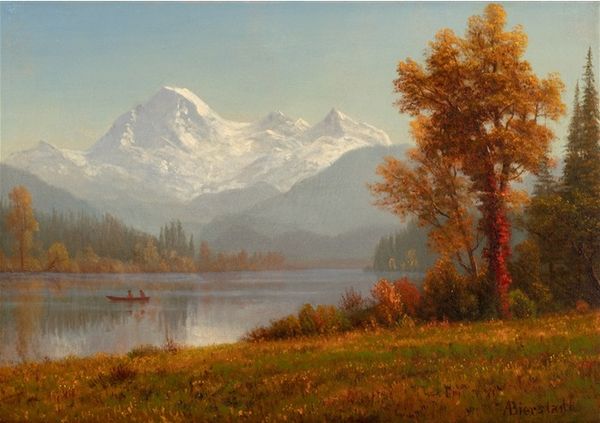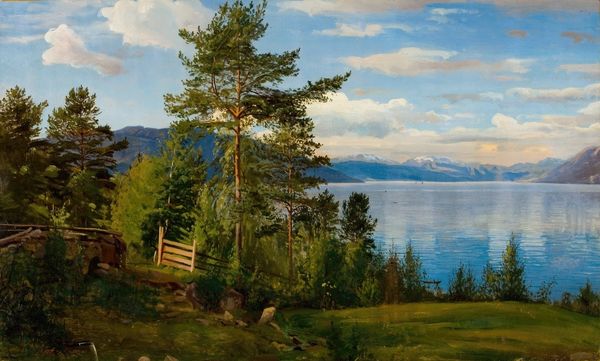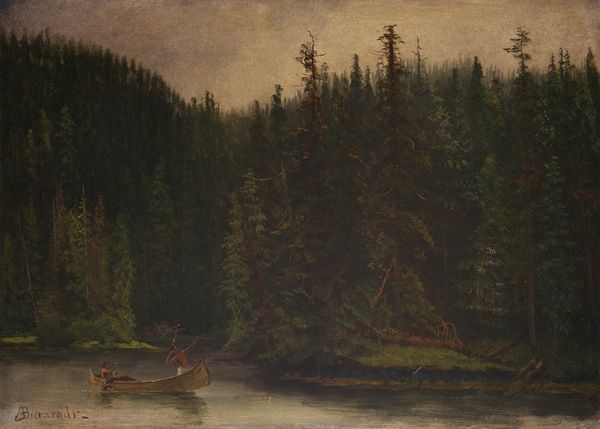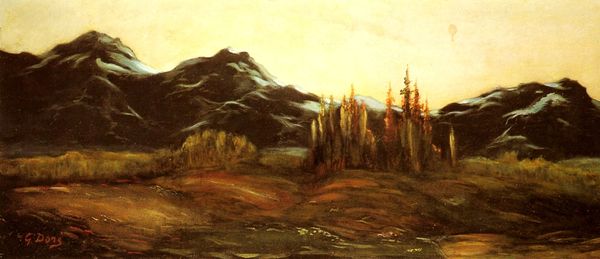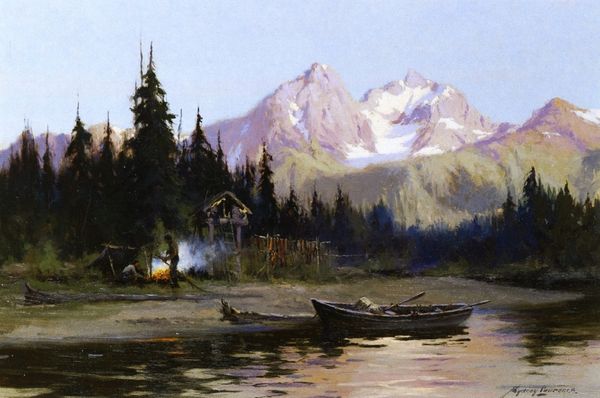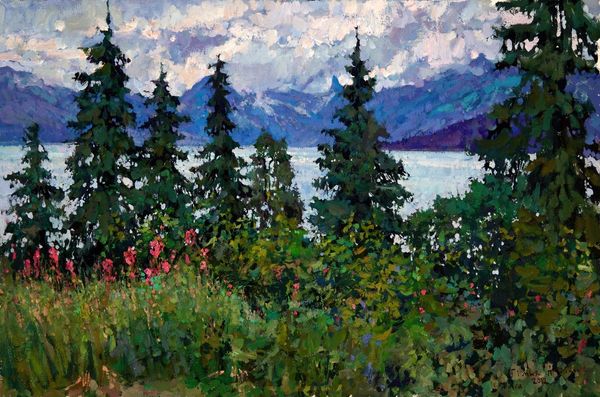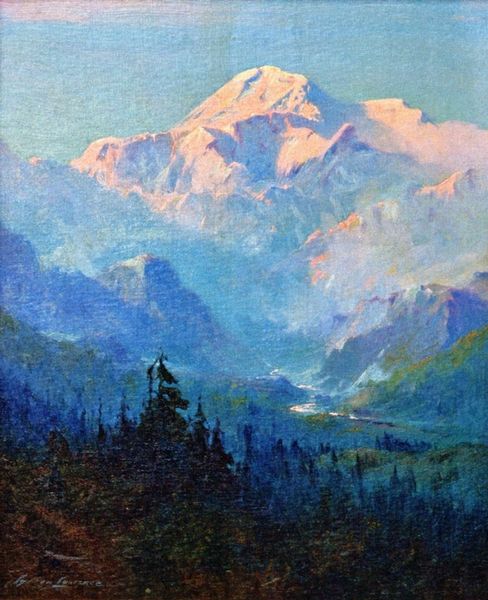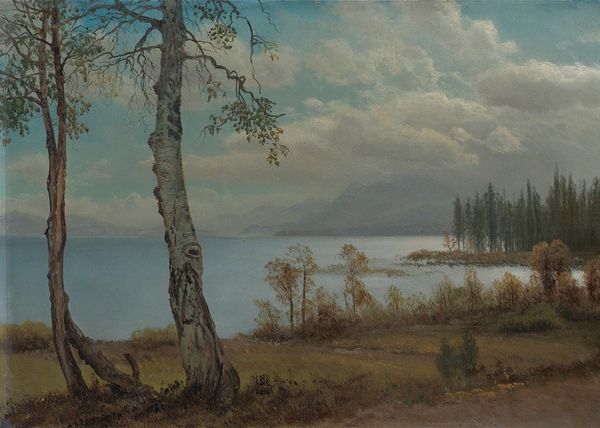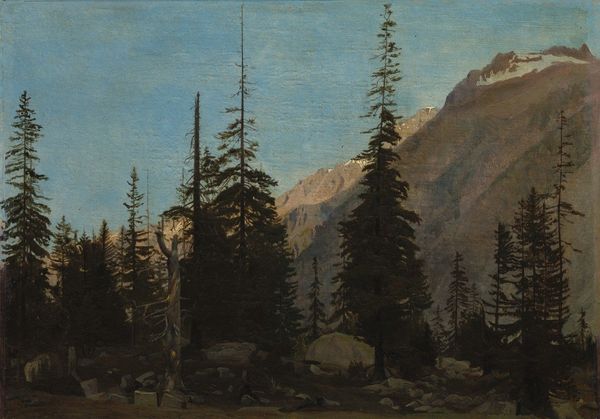
Copyright: Public Domain: Artvee
Editor: Here we have Ludovít Čordák's "Tatra Mountain Lake," painted sometime between 1934 and 1937 using oil paint. I’m immediately struck by how the composition leads your eye back to that majestic mountain, yet the brushstrokes feel so impressionistic and almost abstract up close. What formal elements stand out to you? Curator: The artist’s manipulation of color and form warrants close examination. Note the juxtaposition of the cool blues of the lake with the warmer tones of the foreground foliage. Čordák isn't merely representing a landscape; he's constructing a visual experience through strategic arrangement of chromatic values. Editor: It almost feels like a dance between realism and something more abstract, especially with those visible brushstrokes. Is this tension intentional, do you think? Curator: The visible brushstrokes and the flattening of space operate on multiple levels. Semiotically, the landscape signifies the ‘natural,’ however, its fractured rendering contests any illusion of objective representation. Notice how geometric forms – the triangles of the trees, the rectangle of the lake, the pyramidal mountain – provide a structural framework. What do you make of that deliberate geometric structure? Editor: I see the geometric forms and how they help anchor the image, and I like the contrast of them along with what appear to be quickly applied brushstrokes. Curator: Precisely! By focusing on the inherent pictorial qualities of the painting, we appreciate Čordák's intellectual engagement with both nature and the act of painting. Through this visual language, Čordák transforms the motif of the mountain lake into something beyond a simple scene. Editor: That gives me a whole new appreciation for the way the artist put this together. Thanks!
Comments
No comments
Be the first to comment and join the conversation on the ultimate creative platform.
